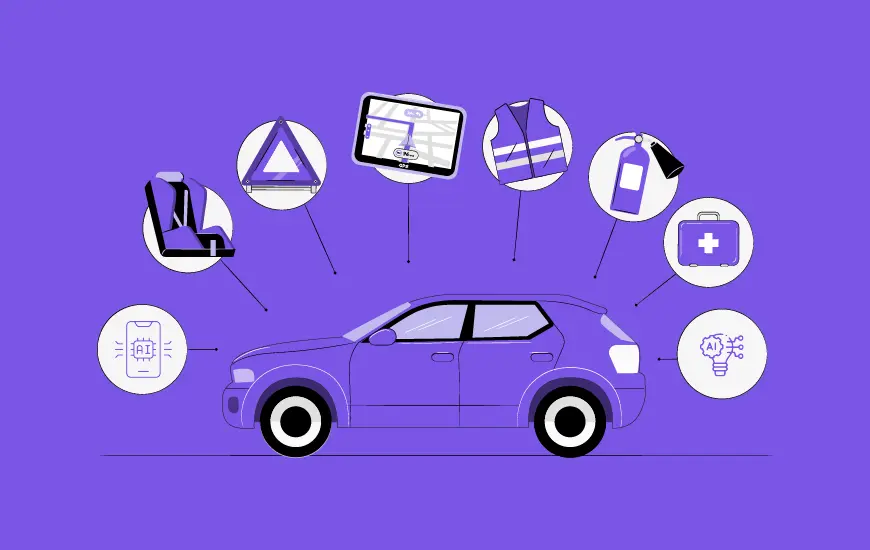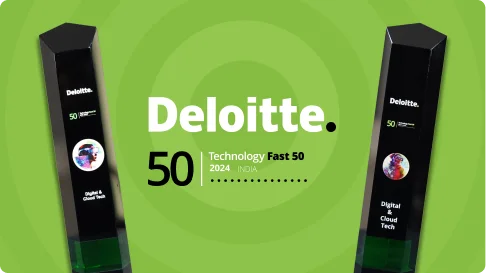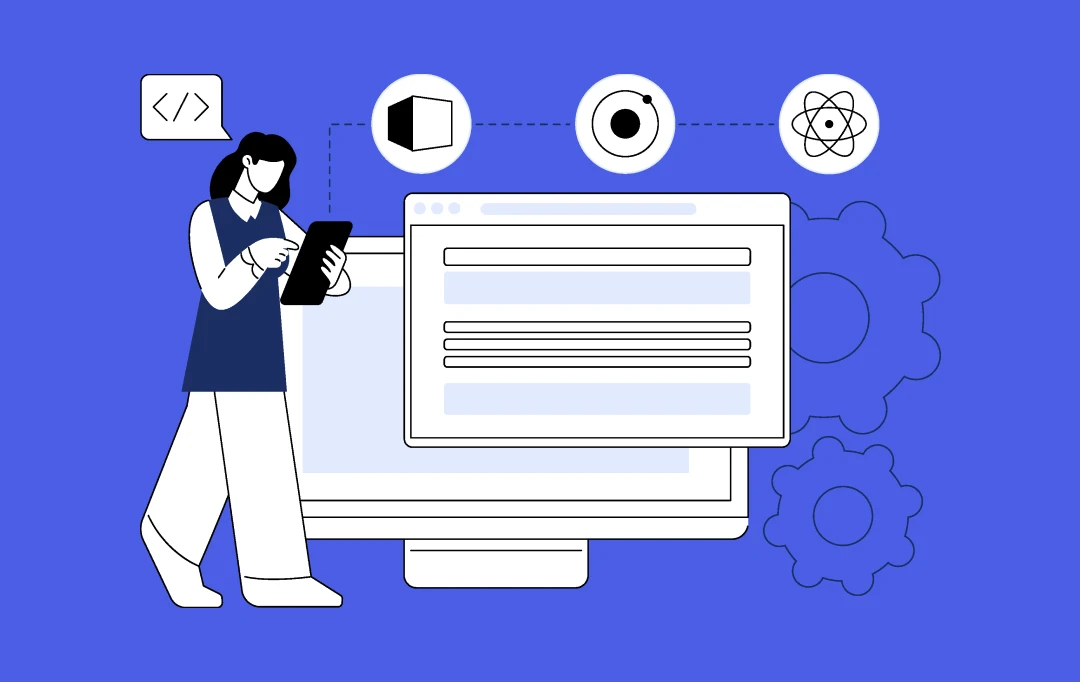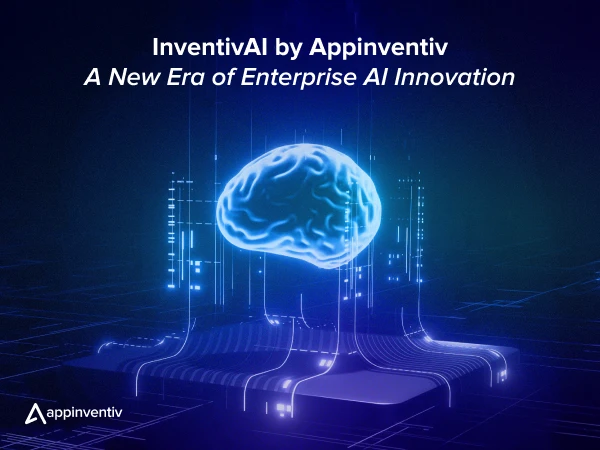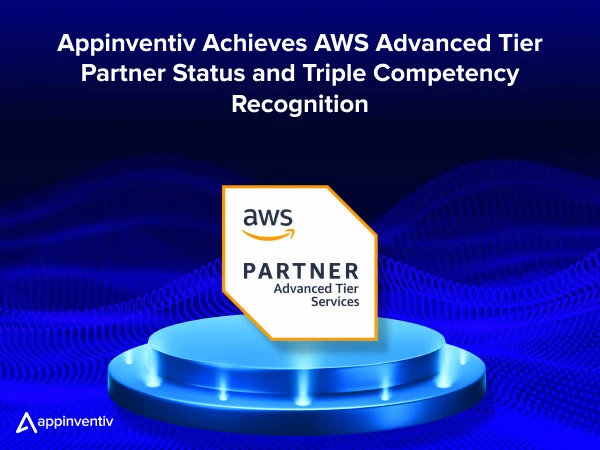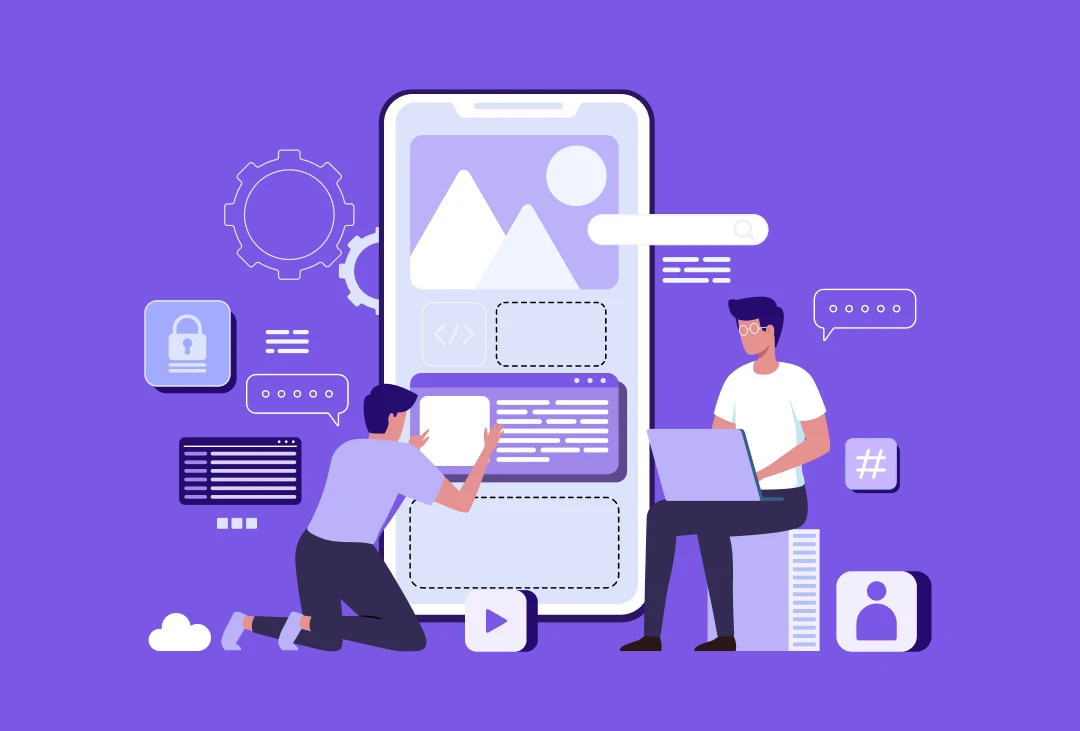- Factors Affecting Mobile App Development Cost in Singapore
- App Platform
- App Complexity
- Development Team Type
- Visual Design Requirements
- App’s Technical Requirements
- Examples of Typical App Types & Their Cost Ranges in Singapore
- Hidden App Development Costs
- Post Launch Maintenance
- Server+Infrastructure Costs
- Third-Party Subscriptions
- App Store Cost Considerations
- Regulatory Compliance and Legal Costs
- User Acquisition and Marketing
- Scaling Costs
- Cost Saving Strategies for App Development in Singapore
- Start With An MVP
- Opting For Cross-Platform Development
- Leverage Open Source Components
- Adopt Agile Methodology
- Prioritize Core Features
- App Development Process: Phase-Wise Breakdown
- Discovery & Planning Phase (10–15% of total timeline)
- Why Choose Appinventiv For Building Your Next App in Singapore?
- FAQs
- Mobile app development costs in Singapore range from SGD 40,000 to over SGD 530,000, depending on complexity, platform, and features. Basic apps start at: SGD 40,000. High-end apps using advanced technologies like AI or blockchain can exceed SGD 530,000.
- Key factors such as platform selection (iOS, Android, Cross-Platform), app complexity (basic, medium, high), and the choice of development team (freelancers, local agencies, international firms) significantly affect the overall app development cost in Singapore.
- Design sophistication and technical infrastructure requirements, such as backend development, third-party integrations, and real-time functionalities, can significantly increase the costs of app development in Singapore, with specialized features like AI and AR/VR further driving up expenses.
- To manage costs effectively, businesses can adopt strategies such as starting with a Minimum Viable Product (MVP), opting for cross-platform development (e.g., React Native, Flutter), and utilizing open-source components to lower initial development expenses while maintaining quality.
You’ve burned the midnight oil mapping out your custom app for the Singapore market. You’ve got your tech stack, your feature list, and a number you’re calling a “budget.”
But let’s get real. Have you stress-tested that number?
Because here’s the deal: Whether you’re bootstrapping your first MVP, dragging a legacy enterprise into the future, or dropping investor cash into Southeast Asia’s tech hub, your entire project is dead on arrival if you don’t have a hardcore, realistic grasp of what mobile app development cost in Singapore. Everything else is just a guess.
| Mobile Apps Based on Complexity | Estimated Development Cost |
|---|---|
| Basic Apps – include essential features, straightforward designs, and minimal backend complexity | USD 30,000 (approximately SGD 40,000) and can go up to USD 75,000 (about SGD 100,000) |
| Moderate Advanced Apps – including real-time tracking, payment gateways, and push notifications | USD 75,000 to USD 225,000 (roughly SGD 100,000 to SGD 300,000). |
| Highly Advanced Apps – including cutting-edge technologies such as AI, blockchain, or augmented reality | USD 300,000 and can exceed USD 400,000 (approximately SGD 400,000 to SGD 530,000+) |
The benefits of developing a mobile app in Singapore extend beyond just creating a digital presence. According to a GSMA report, the rapid increase in smartphone penetration across Asia Pacific, including Singapore, presents a lucrative opportunity for businesses to develop mobile applications.
With over 1.8 billion mobile internet users in the region as of 2023, representing 51% of the population, the demand for mobile-first services continues to surge. Singapore, as a pioneer in advanced mobile networks like 5G, offers a highly connected and digitally savvy population ready to engage with innovative app experiences. [Source: GSMA]
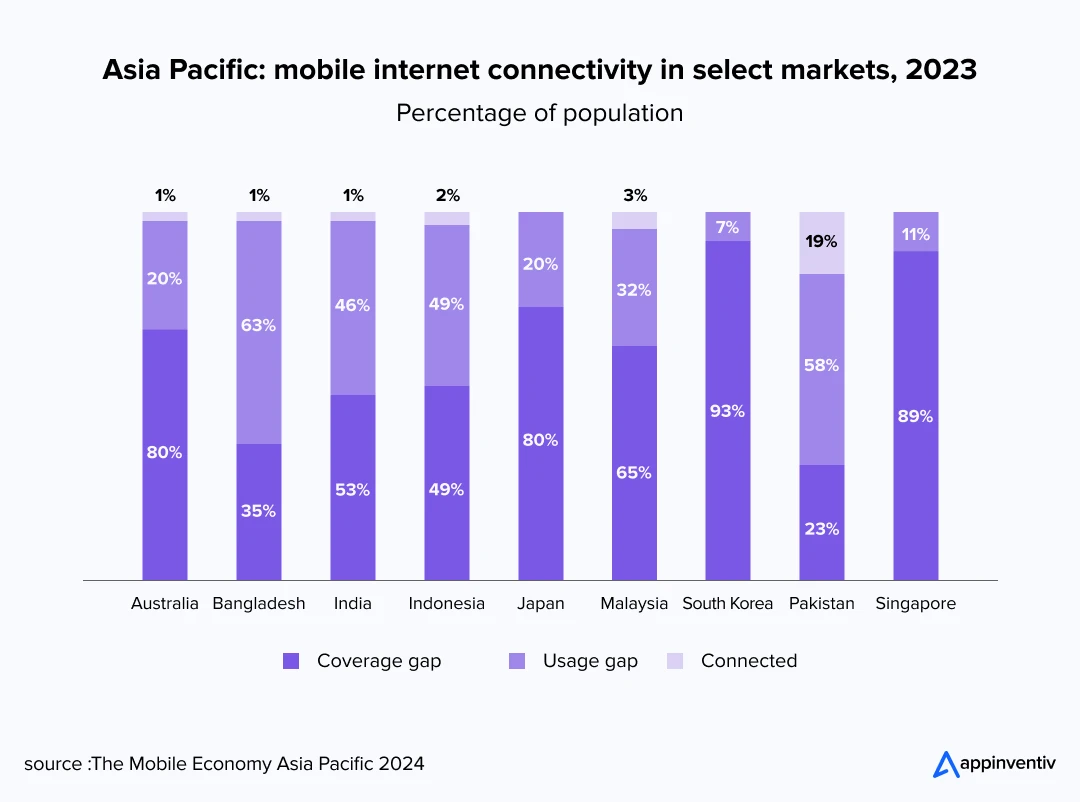
Must Read: Mobile App Development Costs
Let’s get down to what drives your costs and how you can invest without getting taken for a ride. We’re breaking down every line item and strategic choice that will shape your investment to achieve a higher ROI.
Factors Affecting Mobile App Development Cost in Singapore
The cost of building a mobile app can vary widely depending on several important factors. Things like how complex the app is, the design requirements, which platforms you want to support, and the development team you choose all affect the final price. Understanding the key factors affecting mobile app development cost in Singapore will help you better plan your budget and make informed decisions throughout the development process.

App Platform
To create an app in Singapore, the choice of platform plays a significant role in determining your app development costs. Although cross-platform development has become increasingly popular, native iOS and Android apps each have advantages and associated cost factors.
| Development Method | Cost (Traditional Approach) | Cost (App Platform) | Cost Impact Using Platform |
|---|---|---|---|
| iOS/Android App Development | SGD 67,500 – SGD 202,500+ | SGD 40,500 – SGD 108,000+ | Lower |
| Cross-Platform App Development | SGD 40,500 – SGD 135,000+ | SGD 27,000 – SGD 67,500+ | Lower |
App Complexity
When it comes to app development, the complexity of your app plays a significant role in determining the final mobile app development cost in Singapore. The more features, integrations, and custom designs you want, the more time and resources it takes to build. The overall cost of app development based on features increases proportionally with the number and sophistication of functions you want to include.
| Complexity | Development Aspects in the App | Cost Impact (Approx.) |
|---|---|---|
| Basic | Basic apps are functional but minimal. They usually feature simple screens with standard buttons and layouts, without complex databases or server requirements. | SGD 10,000 – SGD 30,000 Low |
| Medium Complexity | These are mid-level complexity apps that require custom designs, user accounts, and backend integration, and have more interactive features. | SGD 30,000 – SGD 100,000 Moderate |
| High Complexity | They include cutting-edge technologies like artificial intelligence and machine learning. | SGD 100,000 – SGD 300,000+ High |
Development Team Type
Choosing the right development team significantly impacts your app development cost in Singapore. The cost to hire an app developer in Singapore varies significantly based on expertise level and engagement model.
| Development Team Types | Characteristics | Cost Impact (Hourly Rates) |
|---|---|---|
| Freelancers | Most affordable option, but may pose risks in accountability and communication. | Lower SGD 67.50 – SGD 162 |
| International Development Agencies | A balance of cost and expertise, offering reliable quality and a global perspective. | Mid-Tier SGD 108 – SGD 270 |
| Local Singapore Development Agencies | Highest cost, but provides deep local market knowledge. | High SGD 135 – SGD 337.50 |
If you are stuck on how to find the right app development team in Singapore, you need to look beyond hourly rates to consider expertise in your specific industry, portfolio of similar projects, and client testimonials. Request detailed proposals that outline their development methodology, communication processes, and quality assurance practices. The best partnerships often come from teams that demonstrate genuine interest in your business goals rather than just technical specifications.
Read More: Outsourcing App Development – Benefits, Process & Risks
Visual Design Requirements
The more sophisticated and polished the design, the higher the app development cost in Singapore tends to be. This is because advanced design elements require more time, skill, and resources to create, directly influencing your overall budget.
The figures below represent the typical cost estimate for app development regarding visual components based on the intricacies of design processes.
| Visual Design Requirements | Aspects | Cost Impact |
|---|---|---|
| Standard Design | Involves minimal design complexity, using pre-built templates or basic UI elements | +SGD 1,000 – 5,000 Lower |
| Customized Design | Requires tailored design elements, such as unique layouts or branded visuals. | +SGD 5,000 – 15,000 Moderate |
| High-End Premium Design | Involves intricate, bespoke designs with advanced animations, premium assets, or complex UI/UX | +SGD 15,000 – 50,000+ High |
App’s Technical Requirements
When developing an application, the visible interface represents only a fraction of what determines both cost and capability. The cost of developing an app in Singapore is heavily influenced by its technical infrastructure, which forms the foundation upon which successful applications are built.
| Technical Requirements | Descriptions | Cost Impact |
|---|---|---|
| Backend Development |
| SGD 10,000 – SGD 50,000+ Moderate to High |
| Third-Party Integrations |
| SGD 5,000 – SGD 20,000 Low to Moderate |
| Real-time Functionality |
| SGD 20,000 – SGD 60,000 High |
| AI / Machine Learning |
| SGD 30,000 – SGD 100,000+ High to Very High |
| Augmented / Virtual Reality |
| SGD 50,000 – SGD 150,000+ Very High |
| Blockchain Integration |
| SGD 40,000 – SGD 120,000+ Very High |
If you are looking for a detailed blog on Mobile App Backend, do have a read on A Quick Guide on Mobile App Backend Development.
By understanding this comprehensive mobile app development cost breakdown, businesses can better plan their digital investments and allocate budgets appropriately across different development phases and components. Let’s examine how these factors translate into typical costs for specific app categories in the Singapore market.
Examples of Typical App Types & Their Cost Ranges in Singapore
The Singapore app development market spans multiple product categories, each with distinct technical requirements and investment levels. The cost of developing an app in Singapore varies significantly by type. Understanding these typical costs for a specific app type provides valuable insights when budgeting for the app development project.
| App Type | Cost Impact (in SGD) | Key Features |
|---|---|---|
| E-commerce Applications | SGD 60,000–330,000+ | Product catalogs, payment processing, inventory management, and personalization |
| On-Demand Service Platforms | SGD 100,000–400,000+ | Provider/customer interfaces, booking systems, location tracking, ratings |
| Social Networking Platforms | SGD 120,000–530,000+ | User profiles, content sharing, interactions, media handling, notifications |
| Financial Applications | SGD 160,000–800,000+ | Secure transactions, account management, financial planning, and regulatory compliance |
| Healthcare Applications | SGD 100,000–600,000+ | Patient records, appointment booking, telehealth, and medical data handling |
| Enterprise Management Systems | SGD 200,000–1,000,000+ | Business process automation, analytics, reporting, and workflow management |
| Educational Platforms | SGD 80,000–400,000+ | Course delivery, assessments, learner progress tracking, certification management |
Read More: How Can Enterprise Mobile App Development Accelerate Your Business Growth?
Hidden App Development Costs
Beyond the quoted app development cost in Singapore, several hidden expenses can significantly impact your total investment. While development firms typically provide estimates covering design, coding, and deployment, savvy project planners should account for these often-overlooked costs to ensure accurate budgeting.
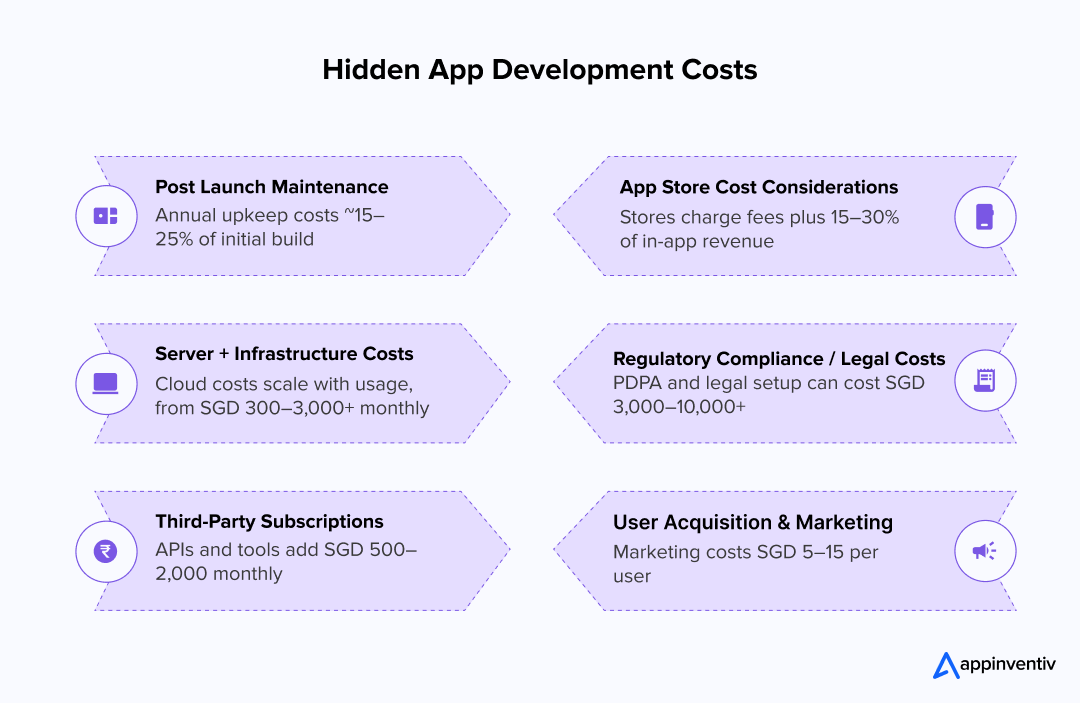
Post Launch Maintenance
In Singapore’s competitive app market, regular updates are crucial for maintaining user engagement and addressing user feedback. When calculating the full cost of developing an app in Singapore, remember that annual maintenance costs typically range from 15% to 25% of the original development investment. For a medium-complexity app that initially cost SGD 100,000, you might need to budget SGD 15,000-25,000 annually for maintenance.
Bonus Read: How Mobile App Maintenance is Key For A Successful App
Server+Infrastructure Costs
Cloud services, such as AWS, Google Cloud, or Microsoft Azure, charge based on usage metrics, including data storage, processing power, and bandwidth. As your user base grows, these costs scale proportionally. For apps with moderate traffic, monthly infrastructure costs typically range from SGD 300 to SGD 3,000, potentially reaching much higher amounts for applications with intensive computing needs or large user bases.
Read Cost to Maintain an App for a better understanding of the aspect.
Third-Party Subscriptions
Many apps rely on third-party services that charge recurring subscription fees. These might include payment processors (2-3% per transaction), mapping services, push notification systems, analytics platforms, or specialized API access. While individually modest, these subscriptions collectively form a significant ongoing expense that increases in proportion to your user base. A typical medium-complexity app might require SGD 500-2,000 monthly for various third-party services.
App Store Cost Considerations
Apple’s App Store and Google Play both charge developer account fees (approximately SGD 127 annually and SGD 32 once, respectively). More significantly, they take 15-30% commission on all in-app purchases and subscriptions. For revenue-generating apps, these commissions represent a substantial ongoing cost that must be factored into your business model.
Regulatory Compliance and Legal Costs
Singapore has strict data protection regulations under the Personal Data Protection Act (PDPA), and compliance requires both initial implementation and ongoing monitoring. Apps in regulated industries, such as healthcare or finance, face additional compliance requirements. Legal costs for privacy policies, terms of service, and compliance reviews can range from SGD 3,000 to SGD 10,000 initially, with additional costs for updates as regulations evolve. The subjective cost of building an enterprise app in Singapore will also be much higher.
User Acquisition and Marketing
Perhaps the most frequently underestimated cost is user acquisition. Building an excellent app doesn’t guarantee users will find it. Effective marketing campaigns, App Store Optimization (ASO), digital advertising, and promotional activities are essential for visibility in Singapore’s competitive app market. Marketing budgets often equal or exceed development costs, with customer acquisition costs in Singapore averaging SGD 5-15 per user, depending on your industry.
Scaling Costs
As your user base grows, technical architecture may need to be refactored to handle increased load. This scaling process often requires significant redevelopment work that wasn’t included in the initial build. When planning your mobile application development cost in Singapore, remember that apps that achieve rapid success sometimes face “good problems” that nonetheless require substantial additional investment to address scale-related challenges.
Cost Saving Strategies for App Development in Singapore
Building an app can be a significant investment, especially in a tech-forward market like Singapore. However, there are smart ways to reduce app development costs in Singapore while still delivering a high-quality product that meets your business goals.
Start With An MVP
Instead of going all-in with every feature, launch a lean version of your app with just the core essentials, like a basic e-commerce app with product listings and payments. This approach, popular among startups, allows you to test the market, gather user feedback, and iterate without incurring significant expenses.
Opting For Cross-Platform Development
Cross-platform technologies, such as React Native or Flutter, can reduce development costs by 30-40% compared to building separate native apps. Modern frameworks deliver near-native performance while requiring only one codebase to maintain. This approach is particularly effective for apps that don’t require intensive device-specific functionality.
Leverage Open Source Components
Utilize existing libraries, templates, and APIs for common functionalities such as authentication, payments, and push notifications. These can slash custom mobile app development cost in Singapore by 15–25%. In Singapore, where developer expertise is top-tier, a renowned firm can seamlessly integrate these tools, ensuring quality and compliance with local standards, such as the PDPA (Personal Data Protection Act).
Adopt Agile Methodology
Agile breaks your project into smaller chunks, allowing frequent testing and tweaks based on feedback. This minimizes costly last-minute fixes, potentially saving 10–20% on development. Singapore’s fast-paced market rewards agility. Top firms utilize this method to deliver apps that evolve in response to user needs, such as a fitness app with real-time tracking that is refined over iterations.
Prioritize Core Features
Avoid integrating your app with high-load features from the very start. It is suggested to often concentrate on key functionalities such as integrating a payment gateway for your e-commerce app, followed by adding newer features based on user feedback. This approach can reduce development costs by 20–30%. In fact, a reliable development partner will help you pinpoint the features that truly matter, ensuring your app provides real value without added complexity.
App Development Process: Phase-Wise Breakdown
Creating an app in Singapore is like making a perfect sandwich, with simple ingredients, but each step needs to be done right to get it just tasty. Understanding the development process phases is crucial when estimating the mobile application development cost in Singapore. The app development process breaks down into clear phases, each with its own tasks, timeline, and cost impact. By walking through these stages, you’ll see how your app goes from a cool idea to a polished product users love, especially when partnering with a top-notch development firm in Singapore’s vibrant tech hub.
Discovery & Planning Phase (10–15% of total timeline)
- Sets project foundation through deep research and strategy.
- Involves stakeholder collaboration to define goals and functionality.
- Key activities:
- Market and competitor analysis
- User persona creation
- Initial feature listing and prioritization
- Critical for identifying risks early and setting success metrics.
Design and UX Phase (15–25%)
- Translates ideas into visual and interactive blueprints.
- UX designers create:
- Wireframes
- Clickable prototypes
- UI designers define:
- Typography, color palette, icons, and UI components
- User testing may be used to validate design assumptions.
Development Phase (40–60%)
- Largest and most intensive phase—turns designs into real code.
- Divided into:
- Frontend: Builds user-facing interface and interactions
- Backend: Develops servers, databases, APIs
- Agile or iterative methods are often used here.
Testing & QA Phase (15–20%)
- Ensures app stability, performance, and usability.
- QA tasks include:
- Automated testing, integration testing, user acceptance testing
- Performance and compatibility checks
- Becomes more intense near project completion.
Deployment Phase (5–10%)
- Prepares app for public release and distribution.
- Activities:
- Final server setup and analytics integration
- Security audits
- App store submissions and beta testing (if needed)
Post-Launch Support (Ongoing)
- Begins after release but is essential for long-term success.
- Focus areas:
- Performance monitoring
- User feedback integration
- Regular updates and bug fixes
- Adapting to market or platform changes
We build winning apps, minus the headaches. Now it’s your turn to join the winner’s circle.
Why Choose Appinventiv For Building Your Next App in Singapore?
Appinventiv leads the way in transforming businesses in Singapore’s dynamic tech scene. Singapore combines innovation with tradition, and we act as the go-to partner to reshape experiences. As a top mobile app development company in Singapore, we go beyond creating apps. Our team crafts solutions that connect with the diverse audience across the region. By combining local market knowledge with global expertise, Appinventiv creates apps that cater to the needs of both users and businesses in Singapore.
- Whether you need a cutting-edge e-commerce app or an AI-driven solution, our agile methods ensure your app is built with precision, guiding it seamlessly from concept to launch.
- We offer cross-platform development for iOS, Android, and tools like Flutter, helping you reduce costs compared to hiring local developers.
- With over 3,000 successful projects, including standout apps for brands like KFC, we combine global tech trends with local expertise to captivate Singapore’s tech-savvy audience.
- Appinventiv prioritizes compliance with Singapore’s stringent data privacy laws, such as the PDPA, while leveraging programs like the Enterprise Development Grant to help save you money.
- Our focus isn’t just on technology; we ensure your digital products reflect Singapore’s diverse culture by blending multiethnic elements with modern UX principles.
- From CBD corporate giants to small shops in Toa Payoh, we craft solutions tailored to your unique goals.
When you work with Appinventiv, you gain a reliable partner who tackles the tricky parts of app development and highlights possible ways to succeed. We help you keep costs manageable while still delivering scalable, secure, and future-proof apps that don’t cut corners on quality.
Want to see your idea take shape? Team up with Appinventiv and turn your app vision into Singapore’s next big win.
FAQs
Q. Which Platform Should I Choose To Create My Application On?
A. Choosing the right platform depends on your target audience, budget, and app goals. If you want to reach both iOS and Android users quickly and cost-effectively, cross-platform development (using React Native or Flutter) is ideal. For optimal performance and access to native features, choose native development: iOS if your users are primarily on Apple devices, and Android if they prefer a wider range of devices. Evaluate your audience’s preferences and app complexity to decide the best fit.
Q. How Much Does It Cost to Develop an App in Singapore?
A. The mobile app development cost in Singapore ranges from USD 30,000-300,000+ (SGD 40,000-400,000+) based on complexity. Basic apps cost USD 30,000-300,000 (SGD 40,000-400,000), medium-complexity apps with multiple features cost USD 40,000-350,000 (SGD 53,000-467,000), and complex applications with advanced technologies start at USD 400,000+ (SGD 533,000+). Costs vary by platform choice, team structure (local teams at USD 75-190/hour vs. offshore at USD 23-60/hour), and maintenance needs (15-25% of initial cost annually). Most businesses balance quality and cost by choosing international firms with a Singapore presence for optimal market-responsive development.
Q. How Long Does It Take to Develop an App in Singapore?
A. App development in Singapore typically requires 3-9 months, depending on complexity. Basic apps can be completed in 3-4 months, medium complexity apps with custom design and backend integration take 4-6 months, and complex applications with advanced technologies need 6-9+ months. The timeline is influenced by project methodology, team capacity, regulatory requirements (particularly for financial or healthcare apps), and testing scope. The standard development process includes: discovery and planning (2-4 weeks), design (3-6 weeks), development (8-20 weeks), testing (2-4 weeks), and deployment (1-2 weeks). For faster market entry, many Singapore development firms offer MVP approaches that deliver core functionality in 2-3 months, followed by iterative enhancements based on user feedback.
Q. What are the challenges that businesses face in app development in Singapore?
A. Businesses encounter several app development challenges in Singapore. The city-state’s premium tech talent and high living costs often translate to steeper development budgets, making the cost of building an enterprise app in Singapore a key concern. Navigating strict regulations like app store policies and Singapore’s robust data protection laws (PDPA) further adds layers of complexity to compliance and security. Additionally, balancing quality with budget requires strategic feature prioritization and choosing the right development partner. Integrating advanced technologies, ensuring seamless user experience across diverse devices, and planning for ongoing maintenance and scalability further complicate the journey.
Q. What are the main benefits of developing a mobile app in Singapore?
A. The benefits of developing a mobile app in Singapore include access to a highly digital-savvy population with 4.51 hours daily smartphone usage, government support through grants like PSG and EDG, world-class digital infrastructure, strong IP protection, and a strategic gateway to Southeast Asia’s larger market. Singapore’s business-friendly environment, technological innovation, and emphasis on digital transformation create unique opportunities for app-based businesses to thrive and expand regionally.


- In just 2 mins you will get a response
- Your idea is 100% protected by our Non Disclosure Agreement.

How Much Does It Cost to Build a Car Rental App like Hertz?
Key takeaways: The cost to build a Hertz-like app ranges roughly $40,000–$300,000+. Complexity, automation, and scale matter more than just the number of features. Real costs continue after launch: infra, maintenance, support, and compliance. Smart planning and MVP-first approach help keep budgets under control. Revenue comes from rentals, add-ons, subscriptions, partnerships, and fleet sales. You…

How Much Does It Cost to Build a Banking App like Barclays?
Key takeaways: Barclays sets the bar: Its speed, security, and money management tools show what EU users expect from modern banking apps. Costs vary a lot: A basic, compliant app can start around $40,000 (≈€30,000), while a feature-rich build can reach $400,000+ or more (≈€298,000+). Rules add real work: Meeting PSD2, GDPR, and instant payment…

How Much Does It Cost to Build a Route Planning App Like Komoot
Europe doesn’t just love the outdoors- it thrives on it. From the Alps to Amsterdam’s bike lanes, cycling and hiking fuel an industry worth $53.3 billion in 2024, projected to grow at nearly 11% CAGR through 2033, as reported by GrandViewResearch. And leading this charge is Komoot, the route-planning app trusted by 40+ million users.…








